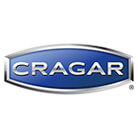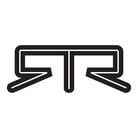A Guide to Upgrading Your Wheels
Updated December 2024
Ready to get rid of the factory wheels for a fresh set of wheels? With so many options out there, it can get confusing. One thing remains true: getting a new set of wheels can make just about any vehicle look better. Take Off Tire has the right set of wheels for anyone and we carry wheel options from several of the top wheel brands. Whether you’re in the market for something high dollar or looking to make a statement on a budget, Take Off Tire has you covered.
You can shop for wheels and see our inventory by clicking HERE. Our online wheel shop is also located at the bottom of this page! If you have any questions along the way or need help ordering your wheels, give us a call: 402-413-6646. We can walk you through any fitment questions and help you decide on a style. The wheels will show up at our shop and we’ll get you scheduled for install.
What to Consider When Purchasing Aftermarket Wheels
1. Proper Wheel Fitment:
Wheel Offset and Backspace: Wheel offset is measured by the inside of the wheel mounting edge to the center of the wheel. Backspace is measured by starting at the same inside wheel mounting edge but measuring back to the inside edge of the wheel (widest part toward the vehicle components). Both Offset and Backspace are used to measure the space for the components inside the wheel well. The wrong offset can cause your tires to rub against suspension components or fenders, leading to premature wear or damage.
Proper Mounting: Your hub bore is the hole in the center of the wheel that fits over the hub on your vehicle. Factory wheels will fit precisely around your vehicle’s tire hub. This precise fit ensures a smooth drive and reduces the chance of problems like imbalances that can result in your vehicle vibrating while driving. A wheel with a hub bore that’s too small won’t fit, while one that’s too large may require hub-centric rings to ensure proper alignment.
Bolt Pattern: Your new wheels must match your vehicle’s bolt pattern. If the bolt pattern doesn’t match, the wheel simply won’t attach properly unless an adaptor is used. You should avoid the use of an adaptor whenever possible.
2. Correct Sizing to Match Tires:
If your stock rims are 17 inches you can plus or minus the diameter of your new wheels. Plus 1 inch would result in 18 inch wheels. Minus 1 inch results in a 16 in wheel. This will give your vehicle a new look but the most important factor is this will require a new tire itself. Plus sizing increases the diameter of your wheel but decreases the profile of the sidewall to match the original total diameter of your wheel + tire. Minus sizing would have the opposite effect but result in the same diameter.
Wheel Diameter: The last number in your tire size (found on your tire itself) indicates the diameter of your wheel. Diameter is measured by a straight line passing side to side through the center of the wheel. Whether increasing or decreasing the total diameter of your wheel and tire it is important to remember that the total diameter needs to clear your braking and suspension components as well as the body of the vehicle.
Wheel Width: The width of your wheel is measured by taking the tire off of the wheel and measuring the wheel from edge to edge. Wheel width is of major importance because the wheel must clear the components surrounding the wheel well area. Some trucks might have extra room to accommodate a wider wheel but other vehicles often don’t have the room to fit a wider wheel without modification.
Tire Size Compatibility: Your tire size must be compatible with the new wheel size. Using a tire that’s too narrow or too wide for your wheel can result in poor performance, uneven tread wear, and compromised safety. If you are upgrading the style of your wheels and keeping the same diameter and width, your existing tires should be okay. If your diameter or width change, your tires should change with them.
3. Will You Need to Change Tire Size?
Changing the size of your wheels often means you’ll need to change your tire size as well. Here’s what to keep in mind:
Plus-Sizing: This involves increasing the wheel diameter while reducing tire sidewall height to maintain the original overall diameter. For example, upgrading from a 17-inch wheel to an 18-inch wheel requires a lower-profile tire to keep the same total wheel-and-tire height (unless you are also making suspension changes).
Speedometer and Odometer Accuracy: If the overall diameter changes, your vehicle’s speedometer and odometer may no longer read accurately. A larger overall diameter means you’re covering more ground with each tire rotation, which can make your speedometer underreport your speed.
Performance Impacts: Larger diameter wheels often weigh more, which can affect acceleration, braking, and fuel economy. While they might look better, they might not always offer better performance.
4. Material and Construction of Wheels:
Alloy vs. Steel Wheels: Alloy wheels are lighter, provide better heat dissipation, and offer more design variety. Steel wheels, on the other hand, are stronger and more affordable, but they’re heavier and less visually appealing.
Forged vs. Cast Wheels: Forged wheels are stronger, lighter, and more durable, but they’re also more expensive. Cast wheels, while more affordable, can be heavier and less resilient to impacts.
Load Capacity: Ensure the wheels you choose are rated to support the weight of your vehicle, especially for heavier SUVs or crossovers.
A significant part of upgrading your wheels is the look they provide you. While style is subjective, there are practical factors to keep in mind:
Coating and Finish: Wheels come in a range of finishes like chrome, powder-coated, painted, or machined. Each finish has different levels of resistance to corrosion, scratching, and fading. Powder coating provides durability, while chrome offers a brilliant shine but requires more maintenance.
Color Choices: From classic silver to bold black or custom colors, wheel color can drastically change the look of your vehicle. Choose a finish that complements your vehicle’s paint and overall style.
Spoke Design: Different spoke designs can give your vehicle a sporty, luxury, or rugged off-road look. However, more complex spoke designs can be harder to clean and maintain.
6. Contact Take Off Tire With Questions:
Ensuring that you have the correct wheel size is very important to the safety of you, your passengers and your vehicle. If you aren’t confident about figuring out your vehicle’s sizing options or have any questions at all, please don’t hesitate to give us a call for some help!
Enter Your Vehicle Info to Shop for Wheels
Popular Wheel Manufacturers
Take Off Tire is the premium wheel and tire seller and installer in Lincoln, NE. To see our current new tire offerings, CLICK HERE. If you have any questions or need some advise on what to get for your next set of tires give us a call at: 402-413-6646.








